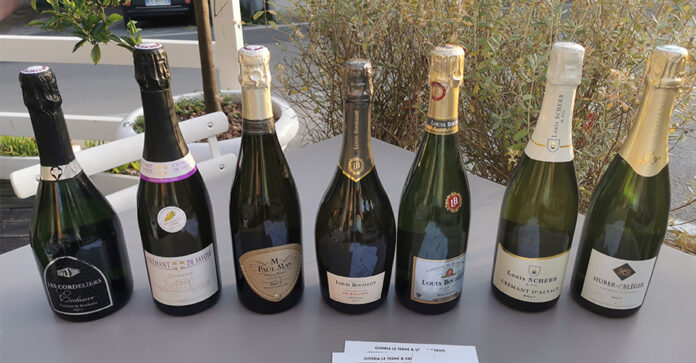Crémant is a sparkling wine produced in 8 AOCs (the French DOPs), using the traditional method
he eight zones are: Alsazia, Bordeaux, Borgogna, Die (Rodano), Jura, Limoux (Languedoc-Roussillon), Loira and Savoia. Lussemburgo and Vallonia outside French borders.
Productions using different grape varieties, different pressures, and shorter aging periods on the lees compared to Champagne, making them easy to drink and for quick consumption
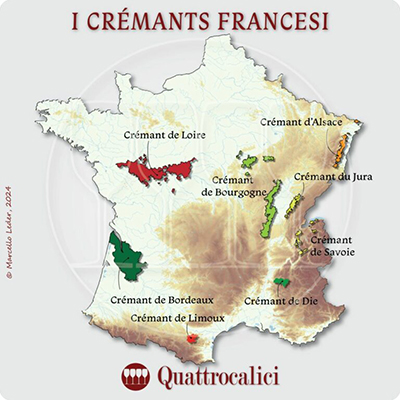
Production Zones (photo by Quattrocalici)
A growing trend, with sales peaking at over 102 million bottles sold in 2022.
The annual production of Champagne averages around 300 million bottles, with variations depending on the year and market conditions. In 2022, for instance, 326 million bottles were shipped.
At the weekly wine school at Osteria Le Terme in Massaciuccoli (Massarosa-Lucca), we discussed at length the origins, history, and diversities of Crémants, tasting and sampling seven (7) Crémants from five different AOCs. They varied in terms of territories, hydro-microclimates, different parallel positions, and unequal altitudes.
Here’s what we tasted:
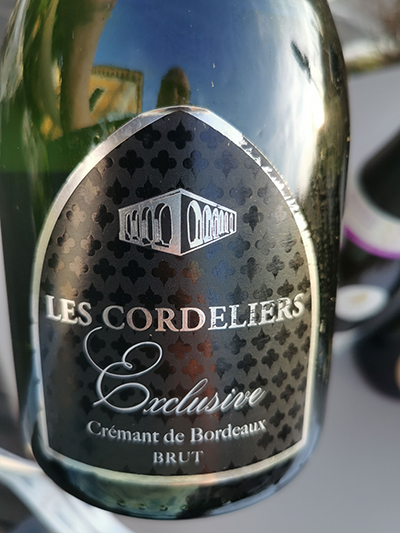
– Cremant de Bordeaux Brut Les Cordeliers. Vitigno Semillon. Medium-fine perlage. On the nose, I perceived fruity aromas, accompanied by notes of citrus. Pale yellow in color. On the palate, this Crémant was lively and fresh. It spent 12 months on the lees.
My judgment: good, score 87/100;
Crémant de Savoie Brut Domaine du Chateau de la Violette is made from 100% of the indigenous Jacquère grape. It features a refined perlage, contributing to an elegant and characterful Crémant that benefits from the typical minerality of Jacquère. In pure Savoyard style, it delighted with pleasant citrus notes on the finish. It spent 12 months on the lees. My judgment: Excellent, score 88/100;
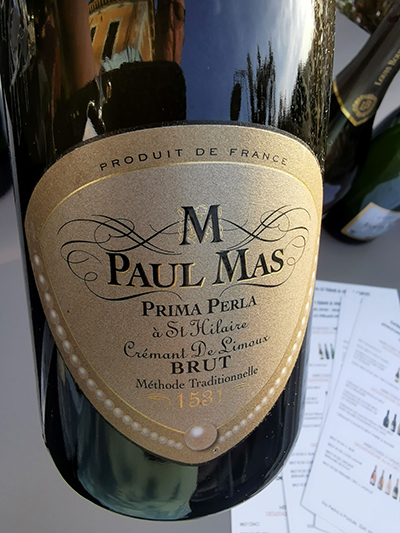
Crémant de Limoux Première Perle Brut Saint Hilaire Domaines Paul Mas. This blend consists of 60% Chardonnay, 20% Chenin Blanc, 10% Pinot Noir, and 10% Mauzac. It spent 15 months on the lees. Its notes of honey and acacia flowers, along with its delicate perlage, make it an excellent sparkling wine with a gourmand vocation. My judgment: Excellent, score 89/100;
Crémant d’Alsace Brut Huber & Bleger Pinot Blanc. The German influences are clearly evident in the Alsatian region, for example, in the grape varieties cultivated or the soil composition. On the palate, it impressed with its fruity freshness, also found on the nose. The perlage convinced with its finesse and length. It spent 12 months on the lees. My judgment: Excellent, score 89/100;
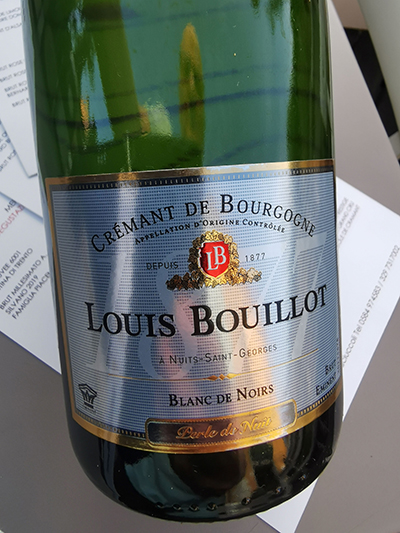
Crémant d’Alsace Brut Louis Scherb. Grape varieties: Chardonnay, Pinot Blanc, Pinot Gris, Riesling. The Crémant d’Alsace Brut by Louis Scherb is a lively and refined expression, with fine perlage, notes of green apple and brioche. It spends 18 to 20 months on the lees.
My judgment: Excellent, score 89/100;
– Cremant de Bourgogne Brut Blanc de Noirs Perle de Nuits Louis Boillot. 00% Pinot noir. It elegantly conveyed the authenticity of Pinot Noir thanks to patient aging, acquiring strength, richness, and breadth. An aging period of over 24 months allows Perle de Nuit to reveal its full grandeur and refinement.
My judgment: Excellent, score 90/100;

Crémant de Bourgogne Extra-Brut Blanc de Noirs en Bollery 2019 Louis Boillot. This is 100% Pinot Noir.
The golden color of this Crémant is an old rose-pink powder. Its very expressive nose brought to mind candied fruits. Notes of white and dried fruits developed as they reached the taste buds. The finish was rounded and generous. It spent 18 months in the bottle. My judgment: Excellent, 90/100 (which is a very high score for a Crémant).
Tastings conducted on June 25, 2025
Urano Cupisti

